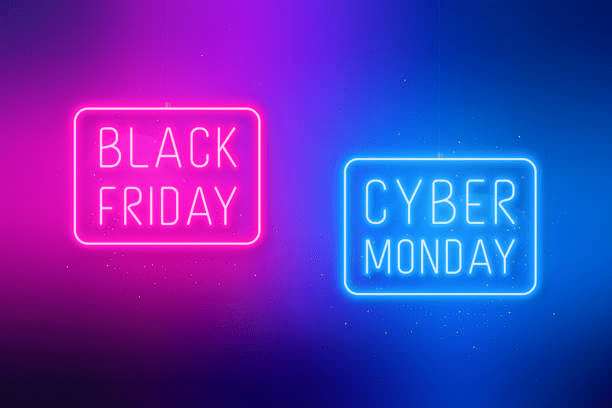Black Friday is one of the busiest shopping days of the year in the United States. It’s a day filled with deals, discounts, and the start of the holiday shopping season. Beyond sales and promotions, Black Friday has a complex history and cultural significance that has evolved over the years. In this article, we explore what Black Friday is, its history, and why it holds such a crucial place in American society.
What is Black Friday?
Black Friday is the term used for the day after Thanksgiving in the United States, which falls on the fourth Thursday of November each year. This Friday marks the official beginning of the holiday shopping season. Retailers across the country offer substantial discounts on a wide range of goods, drawing millions of shoppers to physical stores and online platforms. From discounted electronics to clothing and household items, Black Friday has become synonymous with aggressive sales and significant markdowns.
The event’s timing is key to its importance. For many, Black Friday is the first major shopping opportunity before Christmas and other end-of-year festivities, making it a critical time for purchasing gifts. In recent years, the growth of e-commerce has expanded Black Friday beyond in-store shopping, with online retailers now offering similar deals, some even extending the discounts through the weekend and into “Cyber Monday,” which is dedicated specifically to online deals.
History of Black Friday
Early Beginnings and Retail Initiatives
The origins of Black Friday can be traced back to Thanksgiving parades in the late 19th and early 20th centuries. Many department stores sponsored Thanksgiving parades to signal the beginning of the holiday season, with Macy’s Thanksgiving Day Parade in New York City becoming one of the most iconic. At the end of these parades, stores would open their doors for holiday shopping, and shoppers eagerly began their holiday purchasing.
The term “Black Friday,” however, did not initially refer to shopping. The first recorded use of “Black Friday” dates to September 24, 1869, when a financial panic caused by the actions of two Wall Street financiers, Jay Gould and Jim Fisk, led to a crash in the U.S. gold market. These two men had attempted to corner the market on gold, and when their plan fell apart, the resulting crash impacted the entire financial sector, sending the country into an economic downturn.
The Philadelphia Connection
The modern meaning of Black Friday took shape in the 1950s in Philadelphia. Every year, the Army-Navy football game was held on the Saturday following Thanksgiving, drawing large crowds of visitors to the city. The day before the game, shoppers and tourists would flood into Philadelphia, creating congestion and chaos. Local police officers, who had to work long hours to manage the crowds and traffic, began referring to this chaotic day as “Black Friday.” This name, originally used to describe a day of stress for law enforcement, gradually made its way into the public lexicon.
Retailers in Philadelphia quickly saw an opportunity and started to capitalize on the increased traffic by offering sales and promotions. However, they were not entirely comfortable with the negative connotations of the term “Black Friday.” In an effort to rebrand it, some merchants attempted to rename the day “Big Friday,” but this term did not catch on. By the 1980s, “Black Friday” had spread nationwide as the term associated with holiday shopping.
“In the Black” Myth and Widespread Adoption
By the late 1980s, retailers across the United States had embraced Black Friday. In an attempt to explain the name’s origins in a more positive light, the retail industry promoted the concept that Black Friday was the day stores moved “into the black,” referring to the point at which businesses became profitable. The explanation was based on the idea that while businesses might operate at a loss (or “in the red”) for most of the year, the surge in holiday spending brought them back into profitability, marked by “black” ink on accounting ledgers.
Although this profit-based explanation is largely a myth, it helped cement Black Friday’s reputation as a vital day for retailers. Today, Black Friday is widely recognized not only as the start of the holiday shopping season but also as a day that heavily influences the financial health of the retail industry.
The Expansion to Cyber Monday and Other Retail Events
In the early 2000s, as online shopping gained popularity, retailers observed an increase in online sales on the Monday following Black Friday. This trend led to the creation of “Cyber Monday,” a day dedicated to online deals. Cyber Monday now rivals Black Friday in terms of sales and customer participation, with many consumers preferring the convenience of online shopping to the often chaotic experience of in-store shopping.
Additional retail events, like “Small Business Saturday,” have also emerged to promote local shopping. Small Business Saturday encourages consumers to shop at small, local businesses on the Saturday following Black Friday, supporting community economies and local retailers. Together, Black Friday, Cyber Monday, and Small Business Saturday form a major shopping weekend that extends the holiday shopping frenzy.
What is the Importance of Black Friday?
Economic Impact on Retailers
Black Friday has become one of the most critical days for the retail industry in the United States. Retailers often earn a significant portion of their annual revenue during the holiday season, with Black Friday serving as the kickoff point. Sales during this period can account for as much as 20% of a retailer’s yearly income, making Black Friday an essential opportunity to attract customers and drive profits.
Statistics from past years highlight Black Friday’s economic importance. For instance, the National Retail Federation (NRF) reported that in 2016, around 100 million Americans shopped in physical stores on Black Friday, and an additional 108 million shopped online. Spending for the entire holiday season that year reached $655.8 billion, underscoring Black Friday’s influence on consumer spending.
Consumer Savings and Shopping Culture
For consumers, Black Friday represents a chance to purchase products at lower prices. With steep discounts on popular items like electronics, clothing, and household goods, Black Friday attracts bargain hunters looking for deals they might not find at other times of the year. The anticipation of discounts and promotions fuels a shopping culture that can lead to early morning lines outside stores, crowded aisles, and, in some cases, highly competitive or even aggressive shopping behaviors.
While the day has its downsides, such as long lines and crowded stores, many consumers view Black Friday as a unique shopping experience. It is not only about securing deals but also about participating in a shared event that has become a cultural phenomenon. For some, Black Friday shopping has become a family tradition, with relatives planning their shopping strategies and heading out together.
The Digital Shift and Rise of Cyber Monday
The rise of e-commerce has transformed Black Friday, expanding its scope and making it more accessible to a wider audience. As more consumers turn to online shopping, Black Friday sales have increasingly moved to digital platforms, which has also led to the creation of Cyber Monday. Cyber Monday offers additional deals for consumers who prefer shopping from home, and it has grown to rival Black Friday in sales volume.
In recent years, retailers have expanded their Black Friday sales to span several days or even weeks, creating a phenomenon known as “Black November.” By offering discounts over a more extended period, retailers capture sales from consumers who prefer to avoid the rush and shop at their convenience. This extended sales period also allows businesses to compete with online-only retailers and helps them adapt to changing consumer behaviors.
Broader Economic Significance
Beyond individual retailers, Black Friday has broader implications for the U.S. economy. High sales volumes during the holiday season contribute to economic growth and support employment, with many retailers hiring temporary workers to handle the increased demand. The holiday shopping season often includes job creation in various sectors, from retail to logistics and transportation, adding a seasonal boost to employment rates.
Furthermore, Black Friday spending trends can serve as an economic indicator, offering insight into consumer confidence and spending habits. A strong Black Friday often signals robust consumer spending, which can be a positive indicator for the overall economy. Conversely, a decrease in Black Friday sales might reflect economic uncertainty or shifts in consumer priorities, making it a day that analysts watch closely.
Conclusion
Black Friday has transformed from a chaotic day in Philadelphia’s history into a nationwide retail phenomenon. Its importance in American culture and the economy cannot be overstated, as it marks the beginning of the holiday shopping season and heavily influences the financial health of the retail industry. What began as a day for local shopping crowds has evolved into an event that spans physical stores, online platforms, and even international borders.
As consumer behaviors continue to evolve, so too does Black Friday. With the rise of e-commerce, expanded sales periods, and companion events like Cyber Monday, Black Friday has adapted to meet the demands of modern shoppers. Yet, at its core, Black Friday remains a day deeply rooted in American consumer culture, serving as both an economic driver and a symbol of the holiday season’s arrival.





I truly appreciate this post. I’ve been looking everywhere for this! Thank goodness I found it on Bing. You’ve made my day! Thx again